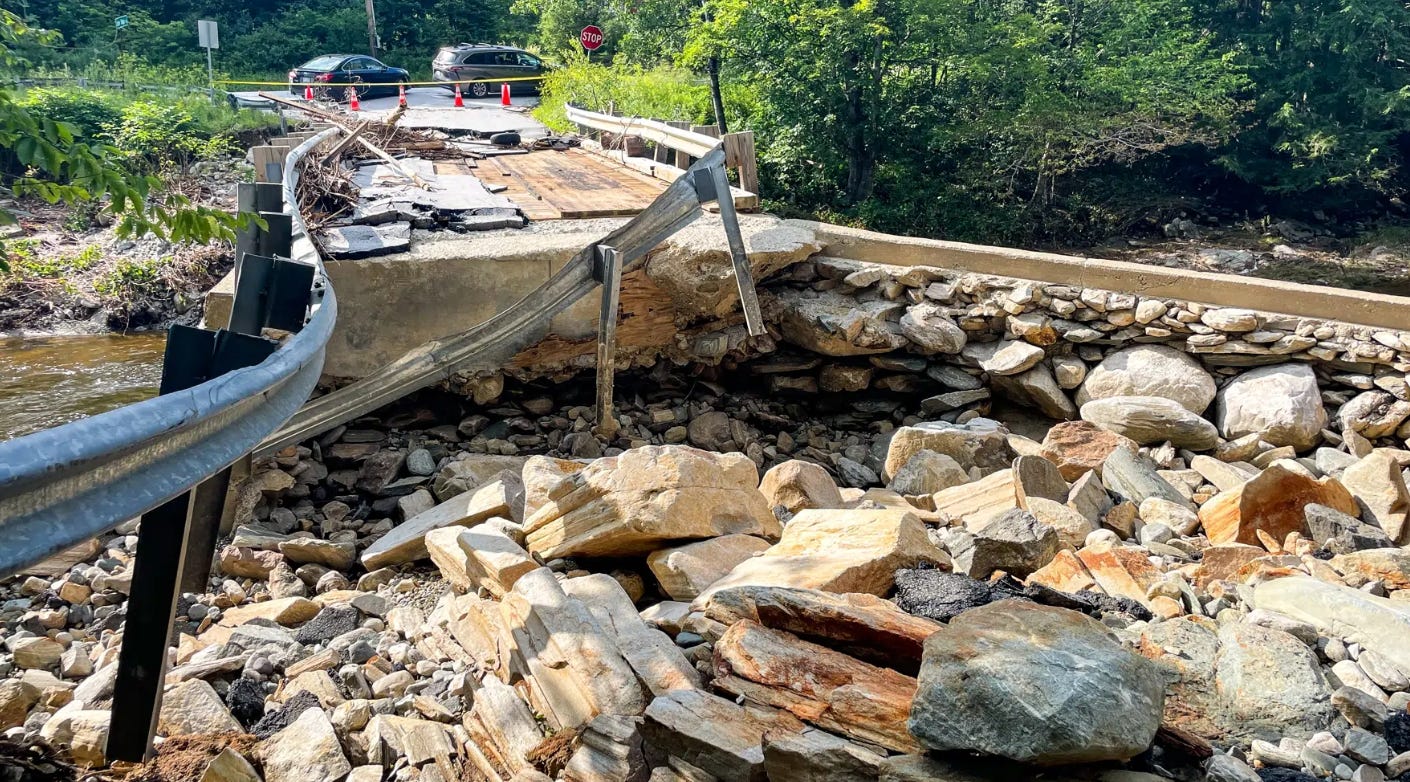With Vermont Flooding Came Temporary Bridges - How Long Will Yours Last?
As months stretch into years, a question bubbles up with increasing frequency in online forums and coffee shop conversations: Just how “temporary” are these temporary bridges?
As we approach the two-year mark since the historic floods of 2023 ravaged Vermont, the signs of that deluge are still etched into our landscape. Washed-out roads have been repaved and riverbanks shored up, but for many communities, a daily reminder of the long path to recovery remains: the temporary bridge.
From the Lamoille River Valley to the southern Green Mountains, these steel skeletons were rapidly deployed in the flood's aftermath, heroic feats of engineering that reconnected severed towns and kept commerce alive. They were, and are, lifelines. But as months stretch into years, a question bubbles up with increasing frequency in online forums and coffee shop conversations: Just how “temporary” are these temporary bridges?
One Vermonter recently described the situation down in Winhall, on a major east-west artery, Route 30. A temporary bridge sits off to the side of the old, destroyed one. It’s a classic stopgap measure—one lane, with a signal, and a reduced speed limit of 30 mph where it used to be 50. The bridge, they noted, “rattles like a racket when you drive over,” a sentiment that surely resonates with anyone living near one of these structures. The frustration is palpable, with the commenter seeing “zero signs of anything happening this year.”
This experience gets to the heart of the matter. While we call them temporary, these bridges don’t have a simple expiration date. Their lifespan is not measured in months, but in the time it takes to complete the complex, multi-stage process of building a permanent replacement.
The Race to Reconnect
In the chaotic days following the flood, the Vermont Agency of Transportation (VTrans) and its partners performed triage on a statewide scale. The immediate goal was to restore mobility. This is where modular, prefabricated bridges, often modern versions of the famed “Bailey bridge” developed during World War II, became indispensable. These bridge-in-a-box kits can be trucked to a site and assembled with relative speed, often in days or weeks, allowing essential travel to resume.
They are remarkably durable and safe, designed to handle the daily grind of Vermont traffic. But they are not, by design, the final solution. They are a means to an end.
The "Real" Lifespan
So, how long do they last? The simple answer is: a temporary bridge lasts as long as it takes to fund, design, permit, and build a permanent one. This process, unfortunately, is anything but simple.
A permanent bridge is expected to last 75 to 100 years. Achieving that requires a deliberate and meticulous process:
Damage Assessment and Planning: Engineers must first thoroughly assess the site, considering not just the destroyed structure but the changed landscape. How did the river change its course? How can we build back stronger? This leads to a new, more resilient design.
Engineering and Design: This is an intensive phase where the new bridge is designed to modern standards, able to withstand future flooding events and handle projected traffic loads for decades to come.
Permitting: Any work in or near Vermont’s waterways requires a host of environmental and land-use permits, a process that involves multiple state and federal agencies and ensures the project is done responsibly.
Funding: Securing the necessary funds is a major hurdle. While federal emergency relief covers a significant portion, the financial logistics are complex and take time to navigate.
Construction: Only after all the above is complete can the physical work of building the new bridge begin, a process that itself can take one to two construction seasons, or even longer for major spans.
A case in point is the bridge on VT Route 116 in Bridgewater; VTrans anticipates its temporary bridge will be needed until the permanent replacement is finished in 2026. This three-year timeline from disaster to completion is a realistic, if frustrating, window.
For the rattling bridge on Route 30 and others like it across the state, the wait continues. The inconvenience of a slower commute and the clatter of steel decking are the sounds of recovery in progress. While the absence of visible construction can feel like a standstill, it often masks the critical, time-consuming work happening behind the scenes in engineering offices and permitting agencies.
The temporary bridge, then, is a symbol of both our vulnerability and our resilience. It’s a testament to our ability to patch things together in a crisis, but also a constant reminder of the slow, steady, and deliberate pace required to build a stronger, more permanent Vermont.


